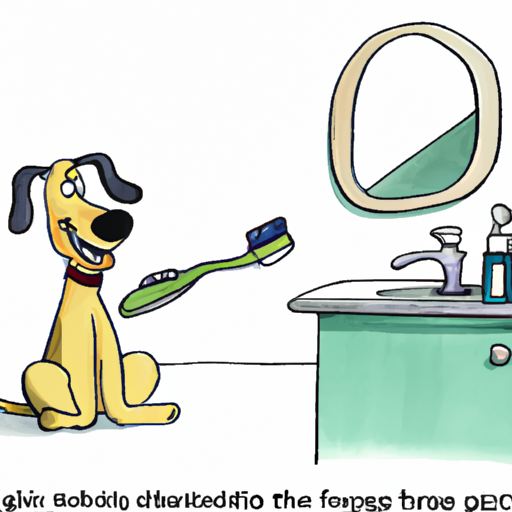Understanding Your Dog’s Dental Health
First and foremost, let’s understand why it’s so crucial to focus on your furry friend’s dental health. Just like us, dogs too are prone to dental diseases. According to the American Veterinary Dental Society, over 80% of dogs show signs of oral disease by the age of three. This is where you, as a caregiver, step in. By maintaining a regular teeth brushing routine, you can prevent potential dental problems and keep your pet’s teeth healthy and clean.
Deciding the Frequency of Brushing
Now, the question arises, how often should you brush your dog’s teeth? The simple answer is: ideally every day. This might seem excessive, but it’s necessary to stave off dental diseases. Remember, consistency is key here. However, if daily brushing seems unfeasible, aim for at least three to four times a week.
Choosing the Right Tools for Brushing
Choosing the right tools is as important as setting the brushing frequency. Here’s what you need:
-
Dog Toothpaste: Never use human toothpaste as it contains ingredients that could harm your dog. Use a toothpaste specifically designed for dogs.
-
Dog Toothbrush: A toothbrush designed for dogs will have soft bristles and a longer handle.
-
Dental Chews and Toys: These can supplement brushing, but can’t substitute it.
Steps to Brush Your Dog’s Teeth
Here’s a step-by-step guide to brush your dog’s teeth. Remember, patience is key. It might take time for your dog to get used to this process.
- Choose a quiet time and place.
- Let your dog taste the toothpaste.
- Lift your dog’s lip to expose the teeth and gums.
- Brush in a gentle, circular motion, focusing on one area at a time.
- Reward your dog with a treat or play time afterwards.
Signs of Dental Problems in Dogs
Despite regular brushing, your dog might still develop dental issues. Here are some signs to watch out for:
- Bad breath
- Loss of appetite
- Broken or loose teeth
- Bleeding or inflammation in the gums
| Symptoms | Potential Causes |
|---|---|
| Bad breath | Gum disease |
| Loss of appetite | Tooth decay |
| Broken or loose teeth | Injury |
| Bleeding gums | Gum disease |
If you observe any of these signs, it’s time to visit the vet.
Frequently Asked Questions
Q: Can I use human toothpaste for my dog?
A: No, human toothpaste contains ingredients harmful to dogs.
Q: How often should I replace my dog’s toothbrush?
A: Every three months, or when the bristles start to fray.
Q: What if my dog doesn’t let me brush their teeth?
A: Patience is key. Start slow and reward your dog for cooperation. If problems persist, consult a vet.
Q: Can dental chews replace brushing?
A: No, they can supplement brushing but not replace it. Regular brushing is essential.
Remember, as a caregiver, you have the power to greatly improve your dog’s dental health. A little effort from your side can ensure your furry friend lives a healthy, happy life.



